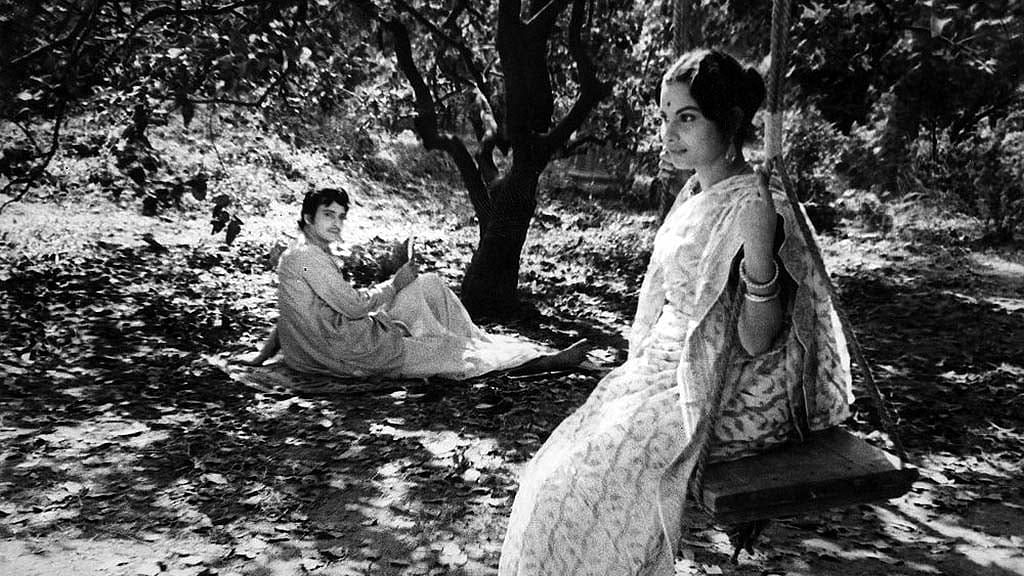
Credit: Special Arrangement
In today’s world, where diverse forms of creative expression and cultural artefacts overwhelm us, the modern definition of culture has shifted. Instead of the traditional idea that culture is rooted in intellectual and aesthetic training, today’s culture is seen as the everyday practices and characteristics shared by people in a specific place or time. Despite this broader understanding, the essence of classicism in arts can still be appreciated in its most refined form, and there’s no better example than Satyajit Ray’s cinematic masterpiece, ‘Charulata’.
Released in 1964, ‘Charulata’ is a film Ray considered his favourite, as he believed it contained few flaws. This movie embodies the pinnacle of classicism in art, drawing viewers back to the roots of classical philosophy, from ancient Greece through the Renaissance and into the modern era. Classicism, characterised by harmony, restraint, and adherence to established standards, is beautifully illustrated in the film’s opening sequence and later in the iconic garden scene. These scenes epitomise the classicist approach, emphasising form, simplicity, proportion, clarity, and restrained emotion. They challenge viewers to go beyond the conventional narrative structures of mainstream cinema and appreciate film as an extension of classical arts.
‘Charulata’, based on Rabindranath Tagore’s story ‘The Broken Nest’, is set in 19th-century Calcutta during British India. The film remains as fresh and impactful today as it was 60 years ago, staged with great emotional restraint and stunning cinematography. Madhabi Mukherjee plays the titular role with elegance, portraying a bored yet sophisticated wife, Charulata, who is married to Bhupati, a newspaper editor (played by Shailen Mukherjee). Bhupati is a proud free-thinker, absorbed in his world of politics and ideas, and unable to grasp the emotional and intellectual needs of his wife.
Ray’s depiction of Charulata’s life — starting with her quietly observing the world from her window — feels like pure visual poetry. The introduction of Bhupati’s charming cousin, Amal (Soumitra Chatterjee), who is an aspiring writer, adds a layer of delicate romantic tension. Ray masterfully handles the subtle sexual tension between Amal and Charulata, while also celebrating the freedom that art offers through reading, writing, and the world of dreams and memories. The film’s emotions are conveyed through subtle gestures, fleeting glances, and humming of songs.
The visual artistry of Charulata is breathtaking. The garden scene which drew the attention of the cineastes and the film critics across the world is a classic example of the impacting nature and possibilities of the visual medium. It shows Amal lying on a lawn seeking inspiration, while Charulata, seated on a moving swing, secretly admires him. The slow but engaging camera work and the appropriate montage in this scene evoke a profound sense of longing in Charulata, hinting at her desire for a different life — one where she is free to express her deepest desires.
‘Charulata’ is more than just a woman’s frustrations in a conservative society; it is a story about her courage to break free, even if only momentarily. The film explores the emotional and intellectual constraints of a woman yearning for freedom in a society struggling with change and progress. The final scene is one of cinema’s most unforgettable endings — Ray himself admitted he could not fully explain it, except that it was the most fitting visual conclusion for the film.
‘Charulata’ stands as a remarkable technical achievement, with Ray working to a perfection in every aspect of its production, from scripting to composing the score and operating the camera. The result is a visually stunning and emotionally resonant work of classical art.
Ultimately, ‘Charulata’ is not just a story about a lonely wife, but a profound exploration of human emotions weighed down by societal constraints, and the desire for freedom. It remains as relevant today as it was at the time of its release, a true testament to Satyajit Ray’s genius as a filmmaker.